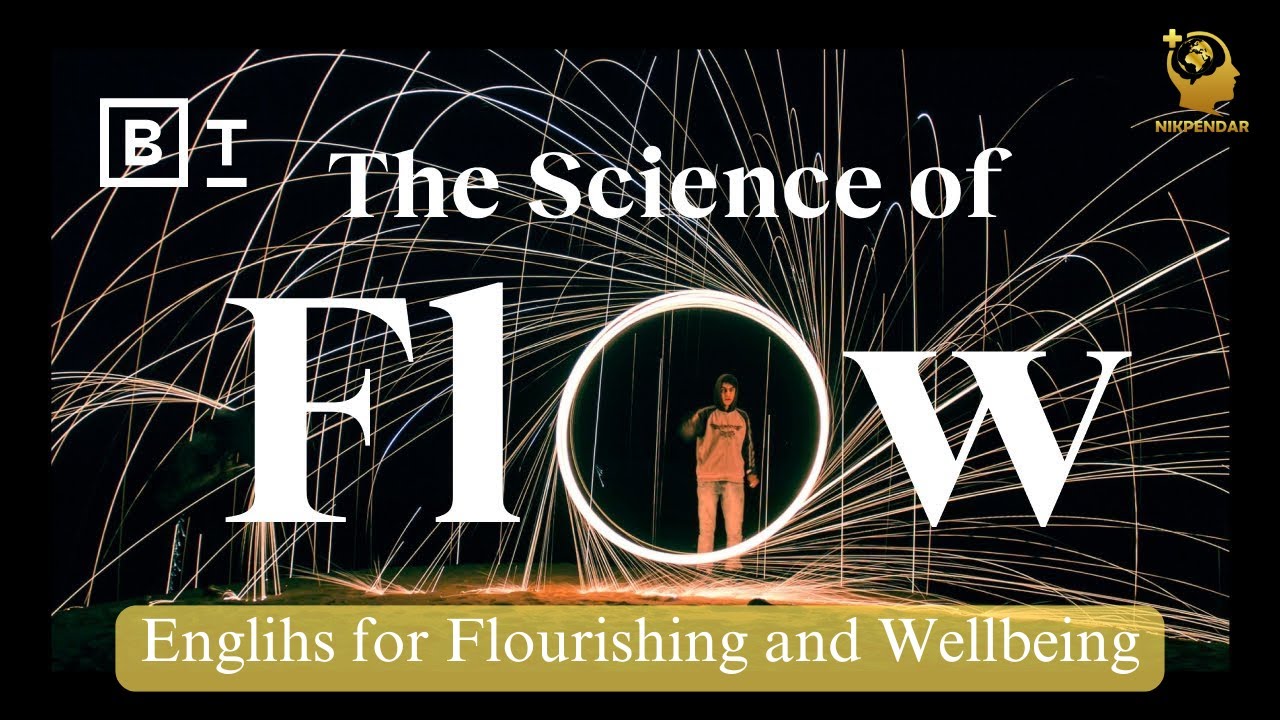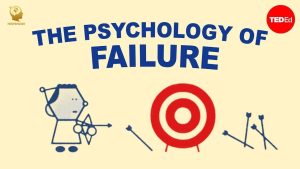
Beginner
Task 1: What is “Flow”?
The speaker talks about “flow.” When you are in flow, how do you feel? What happens to time? Can you give a simple example of when you felt this way?
- Prepare to speak for: 30-60 seconds
- Keywords to use: flow, effortless, disappear, time, fast/slow
Task 2: My Favorite Activities
The speaker talks about feeling very focused on a task. Think about an activity you love to do. When you do it, do you feel very focused? What happens to everything else around you?
- Prepare to speak for: 45-75 seconds
- Keywords to use: focused, love, disappear, fun
Intermediate
Task 1: The Challenge-Skills Balance
The speaker mentions the “challenge-skills balance” as the “golden rule to flow.” Explain what this means in your own words. Why is it important to “stretch but not snap” when trying to achieve flow? Give an example from your own experience or a sport/hobby you know.
- Prepare to speak for: 1-1.5 minutes
- Concepts to include: challenge, skills, balance, stretch, comfortable/uncomfortable, example.
Task 2: Dopamine Triggers
Dopamine is mentioned as a key factor in achieving flow. Describe at least two different ways the speaker says we can get dopamine. How do these “dopamine triggers” help us focus and feel excited?
- Prepare to speak for: 1-1.5 minutes
- Concepts to include: dopamine, novelty, unpredictability, complexity, awe, risk-taking, focus, excitement.
Advanced
Task 1: The Intrinsic Motivators to Peak Performance
Steven Kotler outlines a sequence of five intrinsic motivators: curiosity, passion, purpose, autonomy, and mastery. Explain how these motivators are “designed to be built into one another and work in a specific order.” Analyze the role each plays in driving sustained engagement and peak performance, using examples from the transcript or your own insights.
- Prepare to speak for: 2-3 minutes
- Key Concepts to address: intrinsic motivators, curiosity, passion, purpose, autonomy, mastery, sequence, sustained engagement, peak performance.
Task 2: The Universal Nature of Flow and Its Implications
The speaker states that “Flow is universal in humans” and even “most mammals.” Discuss the significance of flow being a universal experience. How does this understanding, coupled with the idea that people with the most flow in their lives have higher well-being, shift our perspective on human potential? What are the broader implications of leveraging flow for personal growth and collective achievement?
- Prepare to speak for: 2.5-3.5 minutes
- Key Concepts to address: universality of flow, human potential, peak performance, well-being, life satisfaction, group flow, implications for personal/collective growth.
Beginner
Task 1: What is “Flow”?
Listen to the beginning of the talk. The speaker describes “flow” as a state where time passes strangely.
- How does he describe time passing in flow? (e.g., 5 hours feel like…?)
- What happens to “frown muscles” in flow?
- Who coined the term “flow” in German?
Task 2: Getting into Flow
The speaker talks about how to get into a “flow” state.
- How much time should you try to block out for “uninterrupted concentration”?
- What should you turn off to avoid distractions? (Name two things)
- Why is it important to avoid distractions when you are in flow?
Intermediate
Task 1: The “Golden Rule” of Flow
The speaker mentions the “challenge-skills balance” as the “golden rule to flow.”
- Explain what the “challenge-skills balance” means in your own words.
- According to the speaker, what must you be comfortable with to get good at this work?
- Provide an example from your own experience or imagination that demonstrates this “golden rule.”
Task 2: Dopamine and Flow Triggers
Dopamine is important for flow.
- List three things that produce dopamine as mentioned by the speaker (e.g., novelty).
- How does dopamine help us when we are doing a crossword puzzle or Sudoku?
- What is the purpose of dopamine released during risk-taking?
Advanced
Task 1: The Sequence of Motivation and Flow
The speaker outlines five intrinsic motivators: curiosity, passion, purpose, autonomy, and mastery, suggesting they work in a “specific sequence.”
- Describe each of these five motivators and explain their sequential relationship as presented in the transcript.
- How does each motivator contribute to achieving focus and ultimately, peak performance or flow?
- Reflect on how these motivators resonate with your own experiences in learning or personal growth.
Task 2: The Universal Nature and Benefits of Flow
The speaker asserts that “Flow is universal in humans” and even in most mammals. He also links flow directly to well-being and life satisfaction.
- Elaborate on what makes flow a “universal” phenomenon according to the speaker.
- Discuss the speaker’s claim that individuals with more flow in their lives have higher “overall well-being and life satisfaction.” What evidence or reasoning does he offer for this connection?
- Considering the entire transcript, synthesize the speaker’s overall message about human potential and the role of flow in amplifying results “beyond all reasonable expectation.”
Beginner
Task 1: What is Flow?
Read the first few paragraphs of the transcript. What does “flow” feel like? According to the speaker, what happens to time when you are in a state of flow?
Find and write down:
-
- One sentence describing how flow feels.
- What happens to time during flow (e.g., “Five hours go by in like five minutes”).
Task 2: How to Get into Flow
The speaker talks about preparing to get into flow. Name two things you can do to help yourself concentrate better and avoid distractions.
- List two actions:
Intermediate
Task 1: The “Golden Rule” of Flow
The transcript mentions the “challenge-skills balance” as the “golden rule to flow.” Explain what this balance means in your own words. How does it help us pay attention and get into a flow state?
- Explain: What is the “challenge-skills balance”?
- Discuss: How does this balance help create focus and flow?
Task 2: Dopamine and Flow Triggers
The speaker discusses how dopamine is connected to flow. Identify at least three “dopamine triggers” mentioned in the transcript. For each trigger, briefly explain how it contributes to focus and excitement.
Identify and explain three triggers:
-
- Trigger 1: (e.g., Novelty) – Explanation
- Trigger 2: – Explanation
- Trigger 3: – Explanation
Advanced
Task 1: The Evolution of the Flow Concept
Trace the historical development of the “flow” concept as described by Steven Kotler, mentioning key figures and their contributions. Then, analyze how Mihaly Csikszentmihalyi’s research expanded on these earlier ideas to establish “flow psychology.”
- Discuss: The contributions of Goethe, Nietzsche, and William James to the concept.
- Analyze: Csikszentmihalyi’s approach and why he is considered the “Godfather of Flow Psychology.”
Task 2: Intrinsic Motivators and Peak Performance
Steven Kotler outlines five intrinsic motivators (curiosity, passion, purpose, autonomy, mastery) that drive human performance. Explain how these motivators are designed to work together “in a specific order, in a specific sequence.” Discuss how cultivating these motivators can lead to “optimal performance” and help individuals realize their full potential, as suggested by the speaker.
- Explain: The sequence and function of the five intrinsic motivators.
- Discuss: How these motivators contribute to peak performance and realizing human potential.
Beginner
Task 1: What is “Flow”?
Steven Kotler describes “flow” as a special feeling. How does he describe it? What happens to time when you are in flow? Write 3-4 sentences.
- Keywords to use: flow, effortless, time, disappear
Task 2: My Favorite Focus
The speaker talks about how “complete concentration” helps us get into flow. What is something you really enjoy doing where you can concentrate fully? Describe what you do and how it feels to be so focused. Write 4-5 sentences.
- Keywords to use: concentrate, focus, enjoy, feel, hobby
Intermediate
Task 1: The “Golden Rule” of Flow
Explain the “challenge-skills balance,” also known as the “golden rule to flow.” Why is it important to be “comfortable with being uncomfortable” to experience flow? Provide an example from your own experience or imagination.
- Word Count: 100-150 words
- Concepts to include: challenge-skills balance, comfortable with being uncomfortable, stretch but not snap, example.
Task 2: Dopamine and Flow Triggers
The transcript mentions that certain things act as “dopamine triggers” and help us get into flow. Identify and explain at least three of these dopamine triggers. How do these triggers help drive focus and attention?
- Word Count: 120-180 words
- Concepts to include: dopamine, flow triggers, novelty, unpredictability, complexity, awe, risk-taking, pattern recognition, drive focus.
Advanced
Task 1: The SPIRE Model and My Well-being
Tal Ben Shahar presents the SPIRE model (Spiritual, Physical, Intellectual, Relational, Emotional) as elements of happiness. Choose two elements from the SPIRE model that you believe are most important for your own well-being. Explain why you chose these two and how you actively cultivate them in your daily life.
- Word Count: 120-180 words
- Concepts to include: SPIRE (mention your chosen two), well-being, cultivate, importance
Task 2: The Five Intrinsic Motivators to Flow
Steven Kotler outlines five intrinsic motivators (curiosity, passion, purpose, autonomy, mastery) that build on each other to drive peak performance and flow. Analyze this sequence of motivators. How does each motivator contribute to achieving a flow state, and why is their order important? Discuss how these motivators can be cultivated for personal or professional growth.
- Word Count: 250-300 words
- Key Concepts to address: curiosity, passion, purpose, autonomy, mastery, intrinsic motivation, sequence, peak performance, cultivation, personal/professional growth.





